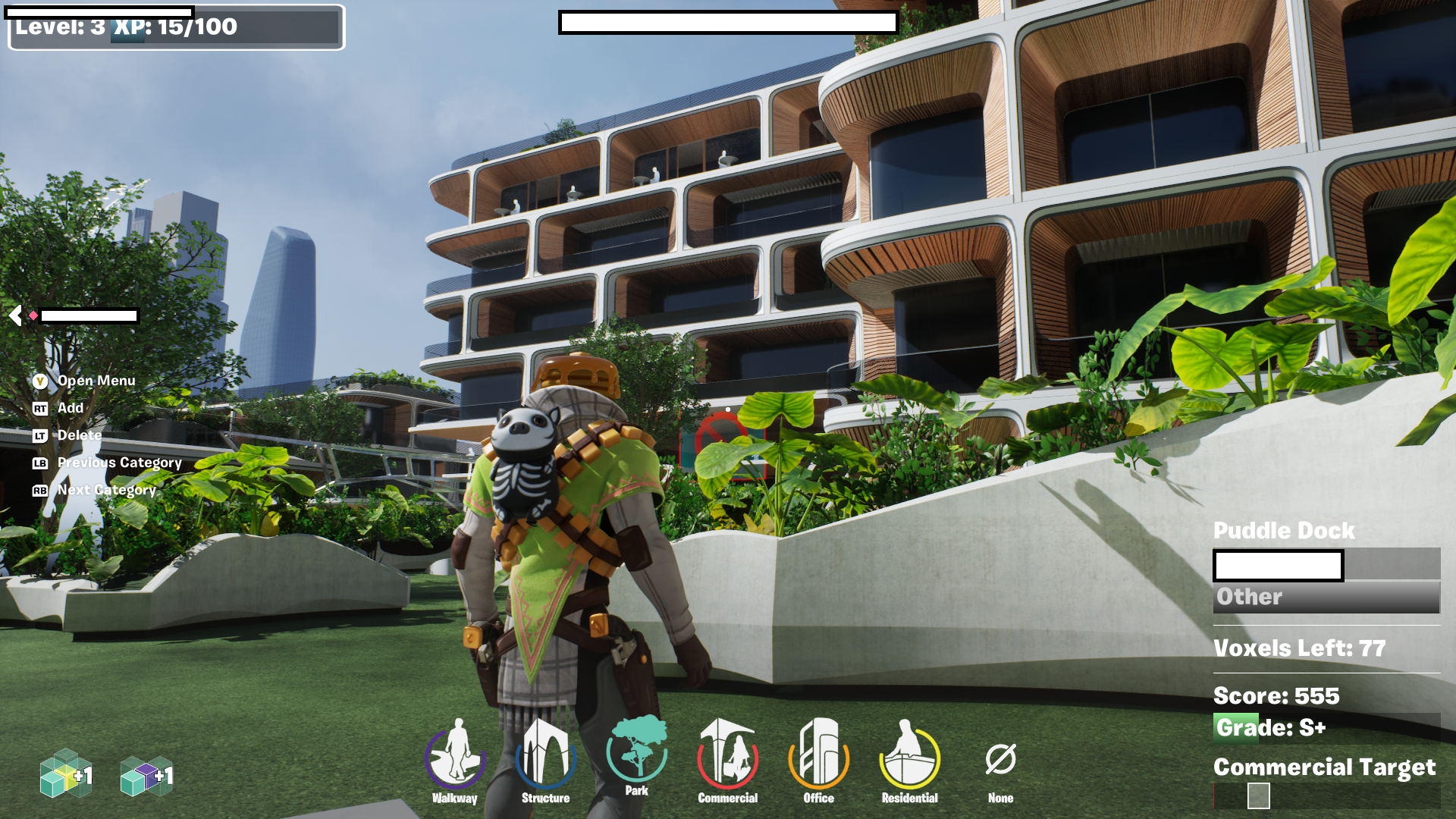Zaha Hadid, the Iraqi-British architect and artist, whose glossy, curvy, arcing buildings have looped and flexed through so many cities around the world, once noted that she had never been asked to design anything of particularly striking significance in London. I wonder what she’d make of the Hadidian, cross-purpose, modular thicket of residential units, parkland, and office space that I helped bring into being over by Blackfriars Bridge the other night. It took about thirty seconds to lay the foundations, and the whole thing was fairly blipped into towering life within a few minutes. By the time I was done, the building soared high over the Thames, more a parody of the Hadid style than the real thing, I suspect, and for that I am entirely to blame. All taken care of in the time it took to eat a packet of crisps.
This is London, but it’s also Fortnite. I was building inside an odd and quietly wonderful project called Re:Imagine London, which is a collaboration between Zaha Hadid Architects and Epic Games. I’m always up for this stuff: architecture and video games converging. A few weeks back I was reading Reyner Banham’s wonderful book, Megastructure: Urban Futures of the Recent Past – there are very few architecture books whose titles could not double as album names for mid-’90s big beat outfits – and it had made me think about this exact kind of thing, in fact.
Megastructures! Banham’s talking about huge buildings that solve multiple needs within the community in which they’re built. They have multiple purposes and functions and allow for various ways of being. I finished the book and thought: yes, Archigram and Le Corbusier, the Plug-In City and Shinjuku, but isn’t Fortnite a megastructure too? So many people coming together in one place, but often using the game in strikingly different ways. So what happens when architects and game tools really converge? Was the faux Hadid building on Blackfriars Bridge a sign of things to come?
1 of 4 Caption Attribution
Re:Imagine London started with Zaha Hadid CODE, the architecture firm’s computational design group. “We are the in-house research and design group,” Shajay Bhooshan tells me over Google Meet. Thoughtful and precise with his words, Bhooshan is a co-founder of CODE and an ideal person to talk to about the convergence of architecture and game design tools.
